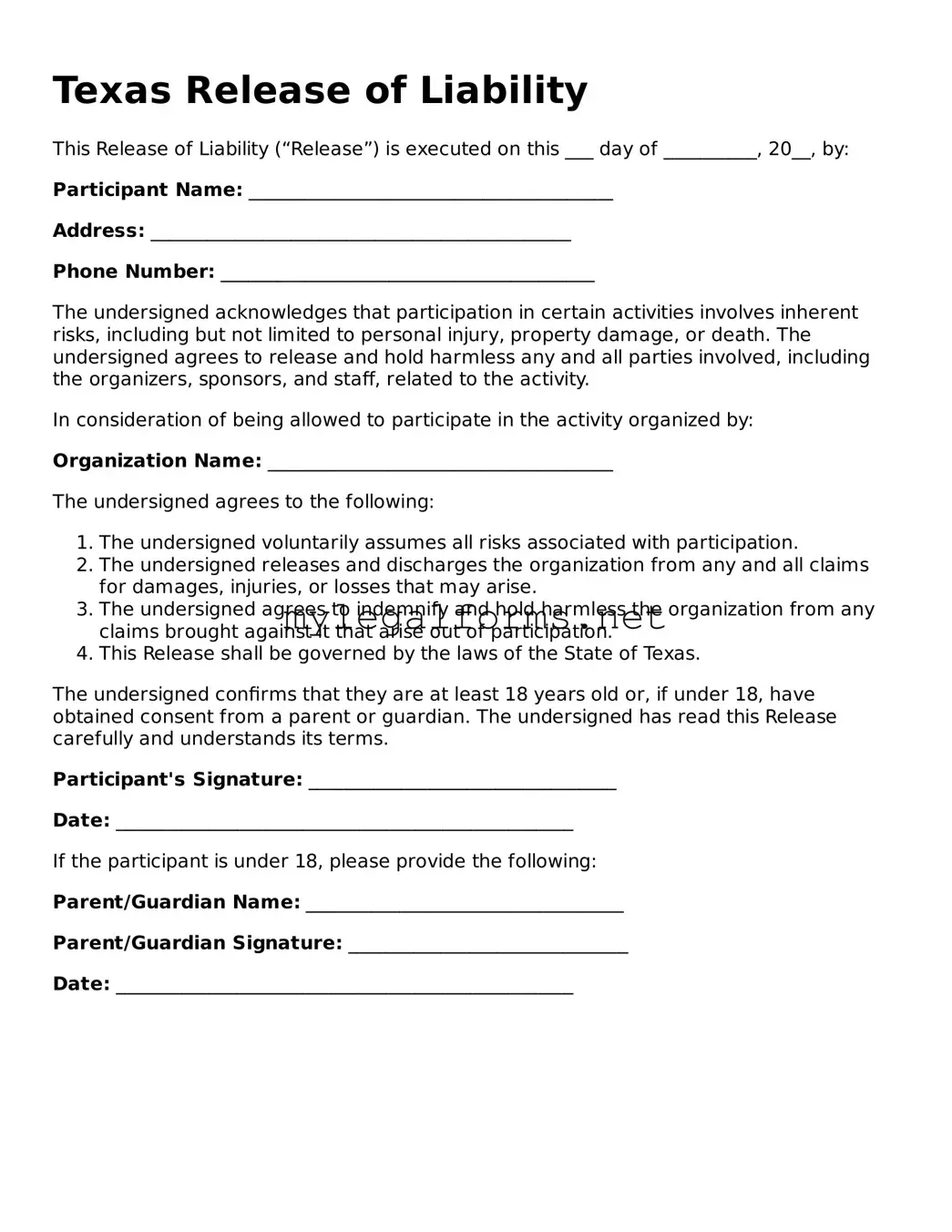Texas Release of Liability
This Release of Liability (“Release”) is executed on this ___ day of __________, 20__, by:
Participant Name: _______________________________________
Address: _____________________________________________
Phone Number: ________________________________________
The undersigned acknowledges that participation in certain activities involves inherent risks, including but not limited to personal injury, property damage, or death. The undersigned agrees to release and hold harmless any and all parties involved, including the organizers, sponsors, and staff, related to the activity.
In consideration of being allowed to participate in the activity organized by:
Organization Name: _____________________________________
The undersigned agrees to the following:
- The undersigned voluntarily assumes all risks associated with participation.
- The undersigned releases and discharges the organization from any and all claims for damages, injuries, or losses that may arise.
- The undersigned agrees to indemnify and hold harmless the organization from any claims brought against it that arise out of participation.
- This Release shall be governed by the laws of the State of Texas.
The undersigned confirms that they are at least 18 years old or, if under 18, have obtained consent from a parent or guardian. The undersigned has read this Release carefully and understands its terms.
Participant's Signature: _________________________________
Date: _________________________________________________
If the participant is under 18, please provide the following:
Parent/Guardian Name: __________________________________
Parent/Guardian Signature: ______________________________
Date: _________________________________________________
